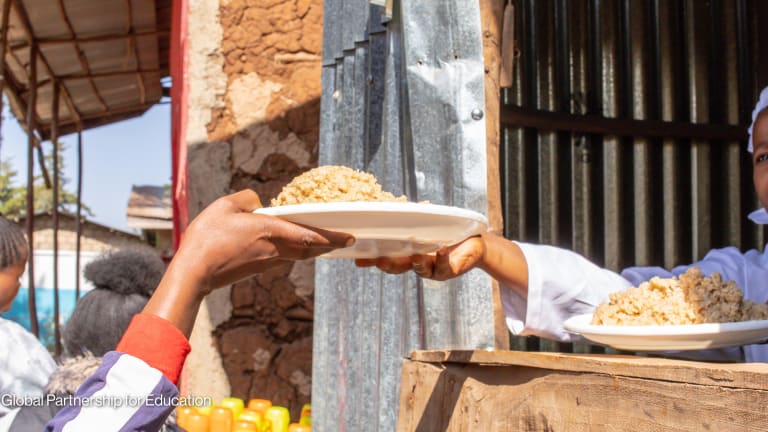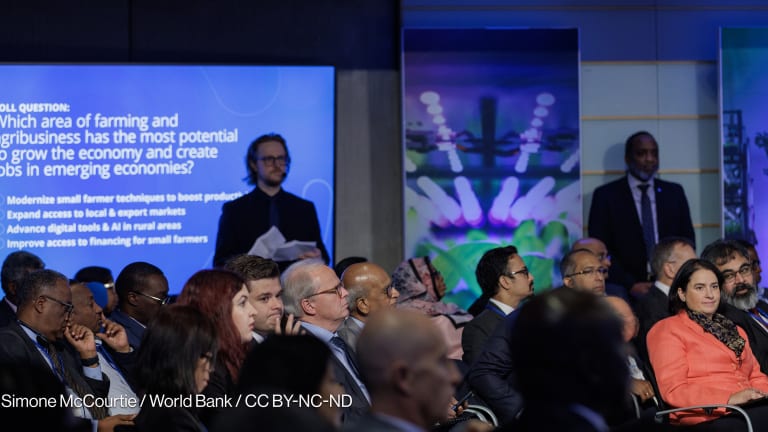
CANBERRA — Increasing diversity of agricultural production has been recognized in research as an important strategy in supporting greater choice in nutritious food globally. It encourages people to make choices for their health, and the health of those closest to them.
“Some people take that message in the wrong way. We're not promoting monocultures.”
— Matin Qaim, professor, University of GöttingenIncreasingly, smallholder farmers are feeling the pressure from governments and food security experts and to diversify their crops to support a better range of food in the market. Matin Qaim, professor of international food economics and rural development at the University of Göttingen, told Devex that the working theory is that smallholders could diversify their diets if there was an increased variety of produce grown on their own farms. But the data does not match up.
This focus area explores innovative solutions to improve nutrition, tackle malnutrition, and influence policies and funding.
“What we are seeing in the empirical evidence is that there are not really strong and big effects of further increasing production diversity,” he said, particularly among smallholder farmers. “We know that many of the undernourished people worldwide are smallholder farmers.”
On these farms, diversity of agricultural production does not equal dietary diversity or dietary quality. The reason, Qaim explained, is what markets will buy. For farmers on small plots of land, increased variety could create a risk to the income generated through more marketable crops. And with less money, households are less likely to have money to help diversify their diet.
“That means — dependent on the specific situation — that a big push towards further diversifying smallholder farm production from a nutrition perspective is not a good idea,” Qaim said.
According to Qaim’s research, much of the source of diversity in individual diets comes from markets, not farms. Detailed data has been analyzed for countries including Ethiopia, Malawi, Kenya, and Indonesia. But the insights, he said, went beyond these countries.
“The statements, I think, are broader than just referring to a specific country,” Qaim said.
Why market demand matters
Qaim explained that markets are more likely to pay higher amounts for staples such as grain, the focus over the past couple of decades, than on produce that is more perishable. Understanding this, he said, was important in developing agricultural and market policies that work.
But this is not a call against diversity — rather a call for smarter policy or diversity within markets that can afford it.
“Some people take that message in the wrong way. We're not promoting monocultures. But when you're looking — especially at farms in Africa — that are already producing on average 10 sometimes 16 different types of crops on one- or two-acre farm, that's just too much,” he said, adding that farms should specialize somewhat.
“We need more diverse food systems,” he said. “But that doesn't mean that every single farm has to have maximum diversity.”
Supporting better nutrition policy
For Qaim, the motivation for him and his research group is to come up with a new type of knowledge that he hopes will help improve policies.
There are still many questions on supporting nutrition yet to be answered, including questions of seasonality.
“We know there is a lot of seasonality,” Qaim said. “Markets are seasonal as are production issues. But most of the data that exists is a snapshot at one point in time during the year. We don’t have a full understanding of markets and nutrition at different times of year.”
Getting a better understanding of seasonality implications from the market, production, and consumption perspectives will help improve knowledge and policy.
The gender dimension of markets and nutrition, as well as the impacts of different types of markets on income and food access, are also important to future research and insights.
“Is it really so that every market has the same effect on income and nutrition?” Qaim asked. “I think it's not the case, but it’s a question that hasn’t really been analyzed.”
This focus area, powered by DSM, is exploring innovative solutions to improve nutrition, tackle malnutrition, and influence policies and funding. Visit the Focus on: Improving Nutrition page for more.








